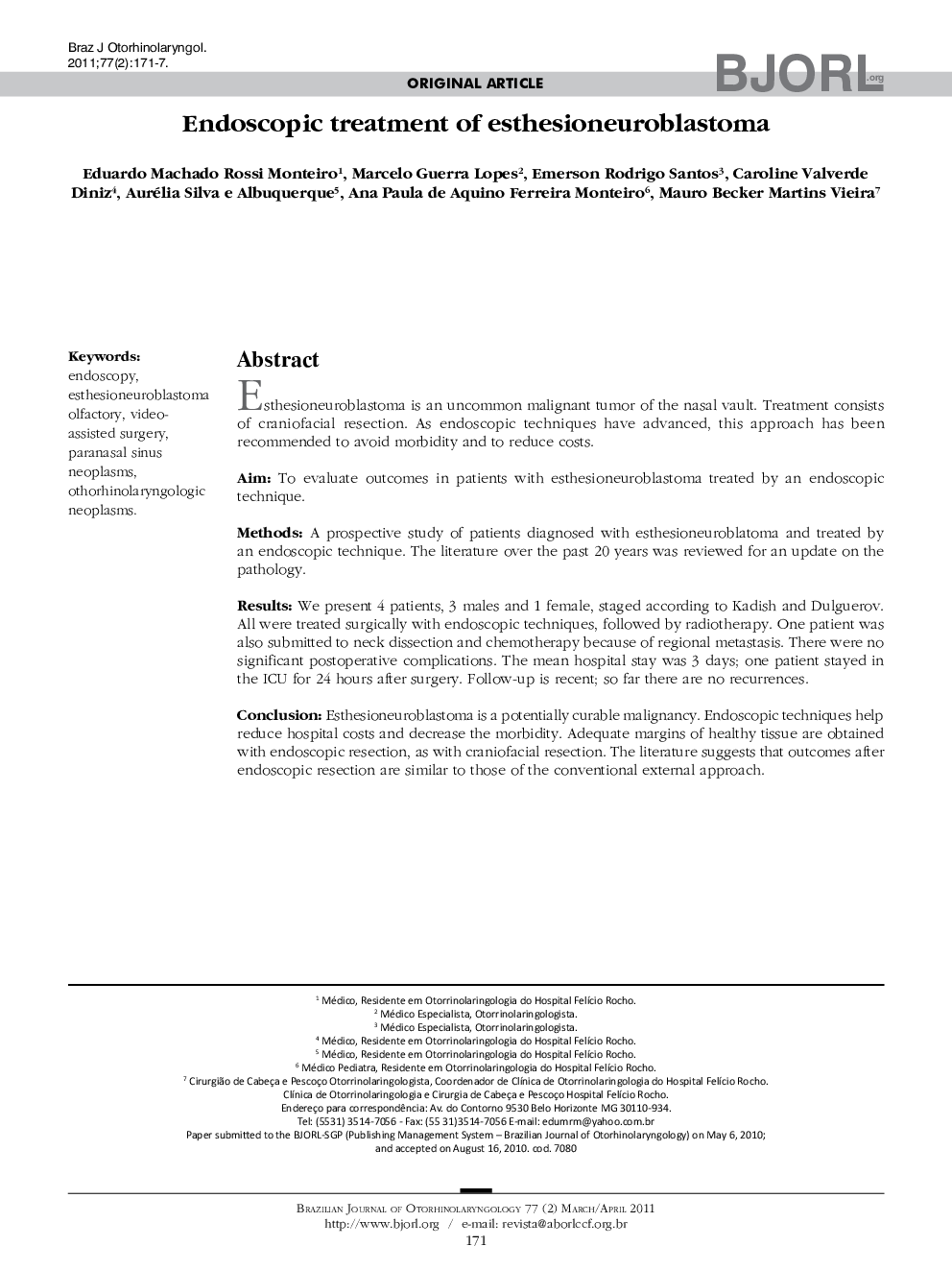| Article ID | Journal | Published Year | Pages | File Type |
|---|---|---|---|---|
| 4107460 | Brazilian Journal of Otorhinolaryngology | 2011 | 7 Pages |
Esthesioneuroblastoma is an uncommon malignant tumor of the nasal vault. Treatment consists of craniofacial resection. As endoscopic techniques have advanced, this approach has been recommended to avoid morbidity and to reduce costs.AimTo evaluate outcomes in patients with esthesioneuroblastoma treated by an endoscopic technique.MethodsA prospective study of patients diagnosed with esthesioneuroblatoma and treated by an endoscopic technique. The literature over the past 20 years was reviewed for an update on the pathology.ResultsWe present 4 patients, 3 males and 1 female, staged according to Kadish and Dulguerov. All were treated surgically with endoscopic techniques, followed by radiotherapy. One patient was also submitted to neck dissection and chemotherapy because of regional metastasis. There were no significant postoperative complications. The mean hospital stay was 3 days; one patient stayed in the ICU for 24 hours after surgery. Follow-up is recent; so far there are no recurrences.ConclusionEsthesioneuroblastoma is a potentially curable malignancy. Endoscopic techniques help reduce hospital costs and decrease the morbidity. Adequate margins of healthy tissue are obtained with endoscopic resection, as with craniofacial resection. The literature suggests that outcomes after endoscopic resection are similar to those of the conventional external approach.
